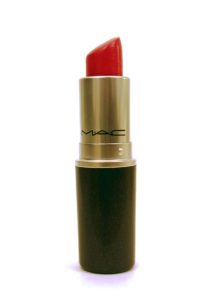![]() It turns out that we are unknowingly being exposed to toxic chemicals called per- and polyfluoroalkyl substances (PFAS) in cosmetic products. A group of researchers tested 231 cosmetic products in both the US and Canada and found that about half of them had high levels of PFAS. And most of the time they were not listed on the ingredients list. Yikes!
It turns out that we are unknowingly being exposed to toxic chemicals called per- and polyfluoroalkyl substances (PFAS) in cosmetic products. A group of researchers tested 231 cosmetic products in both the US and Canada and found that about half of them had high levels of PFAS. And most of the time they were not listed on the ingredients list. Yikes!
PFAS are man-made chemicals commonly called "forever chemicals" because of how they stick around or persist in both humans and the environment. They are found in many products, such as food packaging, non-stick cookware (Teflon), and products containing stain and water-repellents.
They are known endocrine (hormone) disruptors associated with all sorts of harmful health problems, including cancers, reproductive harm (e.g. poorer semen quality), lowered sex and growth hormones in children, thyroid disease, immune effects, and liver and kidney damage. Unfortunately, they are already found in the bodies of almost all Americans (at varying levels), so we should try to reduce our exposure.
Out of 8 categories of commonly available cosmetic products tested, the ones with the highest levels of PFAS levels were foundations, mascaras, and lip products. This was especially true of cosmetics advertised as “wear-resistant” to oils and water (e.g. waterproof mascara) or “long-lasting. This means that when a person applies the cosmetics, the chemicals are getting into the person through the skin, by inhaling the chemicals, or even through the tear ducts (for example - mascara).
The 8 categories of cosmetic products tested included: lip products, eye products, foundations, face products, mascaras, concealers, eyebrow products, and miscellaneous products. Unfortunately, the researchers did not list what products had high levels, low levels, or even no PFAS.
So, if it's not in the ingredient list, then how does a person know which cosmetics are safe and which are harmful? Right now the best thing to do is to go to Environmental Working Group (EWG), and go to their consumer guide page - click on "Skin Deep" for their cosmetic data base.
In addition, this past week Senators Susan Collins (R-Maine) and Richard Blumenthal (D-Conn.) introduced the "No PFAS in Cosmetics Act". Collins said: “Our bill would require the FDA to ban the addition of PFAS to cosmetics products.”
From Science Daily: Use of PFAS in cosmetics 'widespread,' new study finds
Many cosmetics sold in the United States and Canada likely contain high levels of per- and polyfluoroalkyl substances (PFAS), a potentially toxic class of chemicals linked to a number of serious health conditions, according to new research from the University of Notre Dame.
Scientists tested more than 200 cosmetics including concealers, foundations, eye and eyebrow products and various lip products. According to the study, 56 percent of foundations and eye products, 48 percent of lip products and 47 percent of mascaras tested were found to contain high levels of fluorine, which is an indicator of PFAS use in the product. The study was recently published in the journal of Environmental Science and Technology Letters.
"These results are particularly concerning when you consider the risk of exposure to the consumer combined with the size and scale of a multibillion-dollar industry that provides these products to millions of consumers daily," Graham Peaslee, professor of physics at Notre Dame and principal investigator of the study, said. "There's the individual risk -- these are products that are applied around the eyes and mouth with the potential for absorption through the skin or at the tear duct, as well as possible inhalation or ingestion. PFAS is a persistent chemical -- when it gets into the bloodstream, it stays there and accumulates. There's also the additional risk of environmental contamination associated with the manufacture and disposal of these products, which could affect many more people."
Previously found in nonstick cookware, treated fabrics, fast food wrappers and, most recently, the personal protective equipment used by firefighters across the country, PFAS are known as "forever chemicals," because the chemical compounds don't naturally degrade -- which means they end up contaminating groundwater for decades after their release into the environment. Use of PFAS in foam fire suppressants has been linked to contaminated drinking water systems, prompting the Department of Defense to switch to environmentally safer alternatives, for example.
Studies have linked certain PFAS to kidney cancer, testicular cancer, hypertension, thyroid disease, low birth weight and immunotoxicity in children.
Peaslee and the research team tested products purchased at retail locations in the United States as well as products purchased online in Canada. The study found high levels of fluorine in liquid lipsticks, waterproof mascaras and foundations often advertised as "long-lasting" and "wear-resistant." Peaslee said this not entirely surprising, given PFAS are often used for their water resistance and film-forming properties.
What is more concerning is that 29 products with high fluorine concentrations were tested further and found to contain between four and 13 specific PFAS, only one of these items tested listed PFAS as an ingredient on the product label.
"This is a red flag," Peaslee said. "Our measurements indicate widespread use of PFAS in these products -- but it's important to note that the full extent of use of fluorinated chemicals in cosmetics is hard to estimate due to lack of strict labeling requirements in both countries."

This lipstick may or may not contain PFAS - it's unknown without lab testing.
